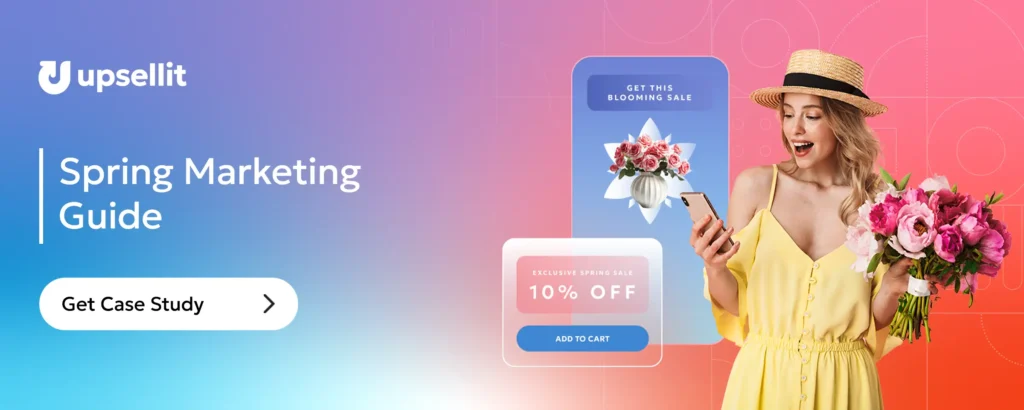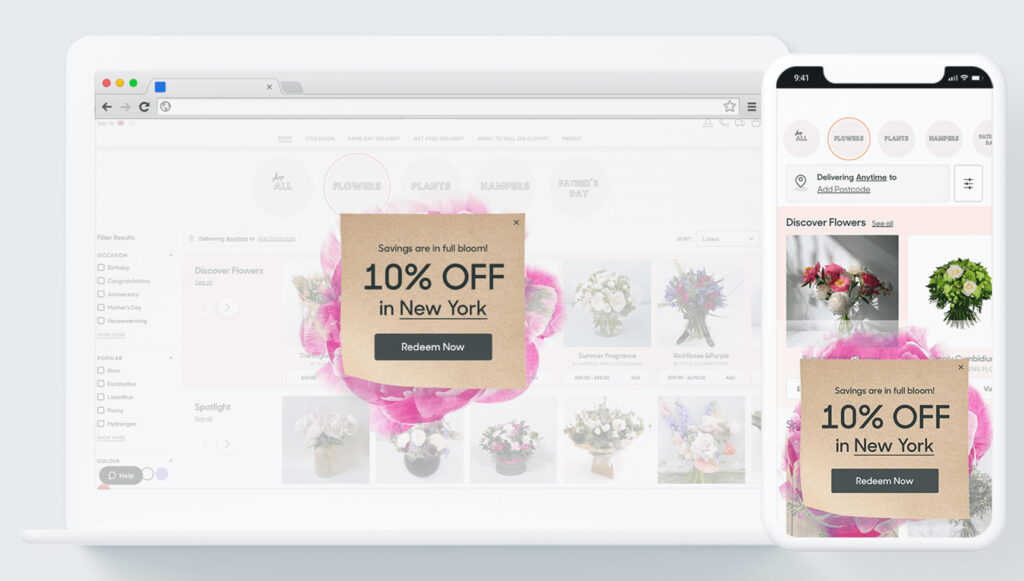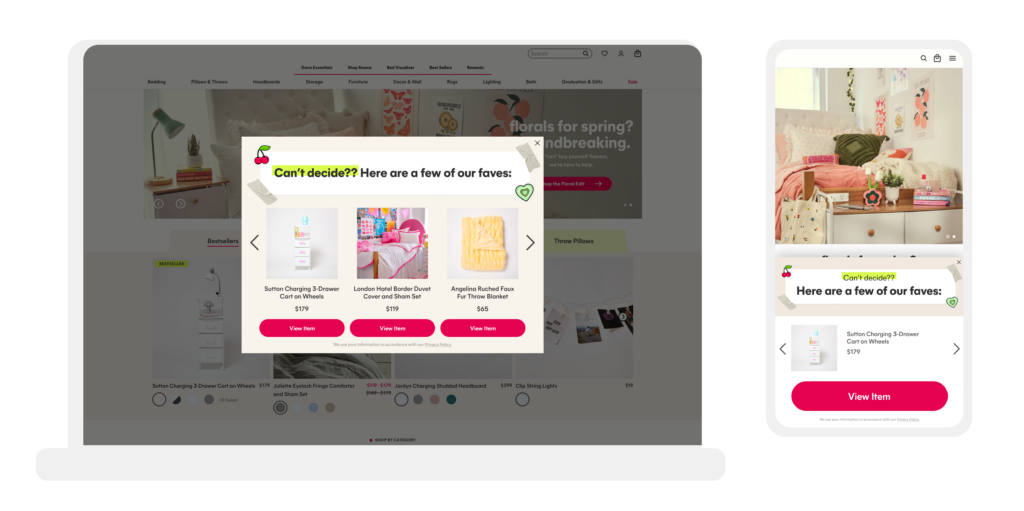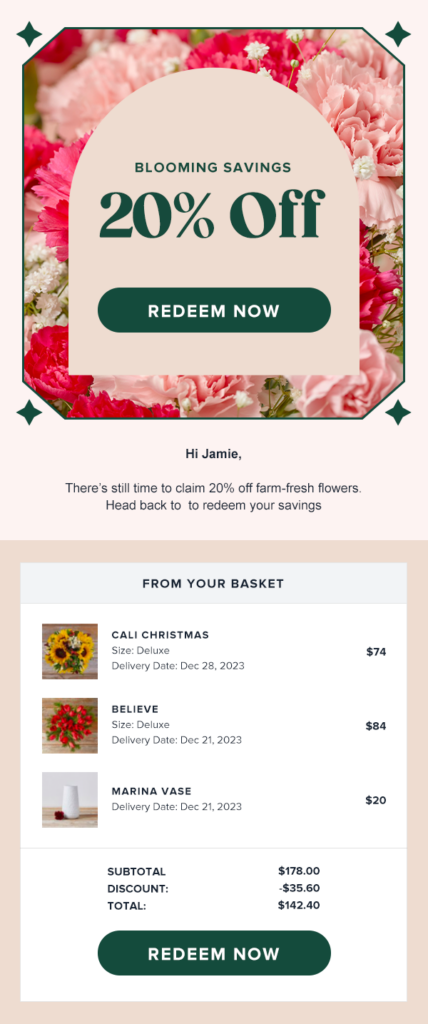As the seasons change, so do the lives and priorities of your target audience. Seasonal marketing isn’t just about promoting products or services during specific times of the year, it’s about resonating with your customers as their needs, desires, and behaviors evolve with each season.
In this blog, we dive into the intricacies of seasonal marketing and how ecommerce brands can leverage spring to drive engagement, conversions, and revenue.
Understanding Seasonal Trends
Ecommerce operates within the broader context of seasonal cycles, with certain times of the year experiencing heightened consumer spending and engagement. From traditional spring holidays to niche events, ecommerce brands must pinpoint these peak seasons to align their marketing efforts accordingly.
By analyzing past sales patterns, website traffic, and customer behavior, brands can identify recurring seasonal trends and anticipate upcoming shifts in consumer preferences.
While historical data provides valuable insights, brands must also stay ahead of the curve by predicting upcoming seasonal trends. This involves monitoring industry trends, consumer sentiment, and emerging cultural influences to anticipate shifts in demand and behavior.
Incorporating Seasonal Themes
Tailoring Website Design
One of the fundamental aspects of on-site seasonal marketing is adapting website design to reflect the current season or holiday. Integrating seasonal spring themes creates a visually engaging experience that resonates with visitors.
Banners and visual elements are prime real estate for showcasing seasonal promotions, sales, and product offerings. By regularly updating these components to align with current seasonal events and holidays, ecommerce brands can capture visitors’ attention and drive traffic to relevant sections of the site such as gift guides and spring essentials.
Optimizing for Mobile Responsiveness
In today’s mobile-first landscape, optimizing website design for mobile responsiveness is essential for delivering a seamless user experience across devices. This includes ensuring that seasonal elements and promotions are displayed correctly on smartphones and tablets, maximizing engagement and conversions.
Personalizing Product Recommendations
Utilizing Customer Data
Personalization lies at the heart of effective on-site seasonal marketing, and leveraging customer data is key to delivering relevant product recommendations. Upsellit’s AI-recommendations analyze purchase history, browsing behavior, and demographic information, allowing ecommerce brands to tailor product suggestions to individual preferences and interests.
Dynamic Product Displays
Upsellit’s Website Experience solutions incorporate dynamic displays and personalized messaging based on user interactions, showcasing personalized recommendations or active cart contents. By implementing dynamic product displays on product pages or abandonment, ecommerce brands can create a shopping experience that resonates with visitors and drives conversions.
For example, if you’re having a Spring Sale, present an abandoning shopper’s cart contents alongside their potential savings to reignite interest and decrease abandonment.
Offering Curated Spring Seasonal Collections
Curated collections bring together a selection of products tailored to specific themes, occasions, or trends based on the time of year. Whether it’s a “Spring Essentials” clothing collection or a “Mother’s Day Gift Guide,” offering curated collections simplifies the shopping experience and encourages customers to explore products for the occasion.
Even if you don’t have specific spring items, you can curate a collection of products that resonate with common spring themes such as gardening, candy, rain gear, or flowers.
Implementing Limited-Time Offers
Showcasing Exclusive Spring Seasonal Deals
Exclusive seasonal deals reward customers with special discounts or promotions that are only available for a limited time. Whether it’s a flash sale, BOGO offer, or early access to new spring products, showcasing exclusive seasonal deals incentivizes purchases and fosters a sense of exclusivity.
Upsellit’s Coupon Experience monitors coupon activity to optimize your coupon strategy. Our patented technology replaces broken codes and blocks unwanted extensions while providing detailed analytics so you can easily monitor your seasonal sales for maximum success.
Creating Urgency with Countdowns
Limited-time offers create a sense of urgency that motivates customers to take action before time runs out. By incorporating countdown timers and expiration dates into seasonal spring promotions, ecommerce brands can instill a sense of urgency and drive conversions.
You can even utilize waterfall timers using different spring elements like rain or flowers creating visual interest to show time is running out.
Highlighting Scarcity of Seasonal Spring Items
Scarcity marketing drives demand for seasonal items by emphasizing limited availability or stock levels. By highlighting scarcity through messaging and dynamic product displays, ecommerce brands can create a sense of urgency and encourage purchases.
Before stock levels run low, retailers can highlight recent views and recent purchases on product pages or on abandonment to highlight product popularity and drive social proof.
When stock levels reach a certain threshold, low stock alerts can be presented to ignite a sense of urgency and move shoppers to checkout. This is especially useful for ecommerce websites that have a gift section or clothing lines made for the spring season.
Utilizing Email Marketing for Seasonal Spring Content Distribution
Email marketing remains a powerful tool for delivering personalized messages and promotions directly to customers’ inboxes. By segmenting email lists and tailoring content to match spring themes and offers, ecommerce brands can effectively drive engagement, conversions, and revenue through email marketing campaigns.
Upsellit’s Remarketing Experience utilizes AI-driven technology to incorporate dynamic content into your seasonal emails. Users who were shopping your seasonal pages can receive targeted content based on their user history and browsing patterns to drive shoppers back online.
Monitoring and Analyzing Performance
Tracking Key Performance Indicators (KPIs)
Effective seasonal marketing requires continuous monitoring and analysis of key performance indicators (KPIs) to gauge the effectiveness of strategies and campaigns. From conversion rates and revenue generated to website traffic and engagement metrics, tracking KPIs provides valuable insights into the success of seasonal marketing efforts.
In addition to KPIs, monitoring customer engagement metrics such as bounce rate, time on site, and click-through rate provides deeper insights into user behavior and preferences. By analyzing these metrics across different seasonal marketing campaigns and initiatives, ecommerce brands can identify areas for improvement and optimize the customer experience.
Making Data-Driven Adjustments for Optimization
Whether it’s refining website design elements, fine-tuning product recommendations, or adjusting promotional tactics, optimization is essential for maximizing results and driving long-term success.
Upsellit’s reporting suite offers brands the capability to monitor campaign performance and make informed decisions in real-time. We provide instant access to detailed analytics to facilitate swift adjustments and optimizations, guaranteeing maximum impact for your campaigns. Upsellit’s A/B testing capabilities ensure maximum impact and goes beyond conventional expectations, consistently giving brands a competitive edge.
Boost Sales with Seasonal Spring Marketing
By understanding seasonal trends, tailoring website design, and leveraging personalized strategies, ecommerce brands can create immersive and compelling seasonal experiences that resonate with your customers. From limited-time spring sales to seasonal recommendations, the possibilities for seasonal marketing are endless.
Looking for more spring ideas? Download Upsellit’s Spring Marketing Guide to inspire your content marketing plan and increase sales for the rest of the season.







